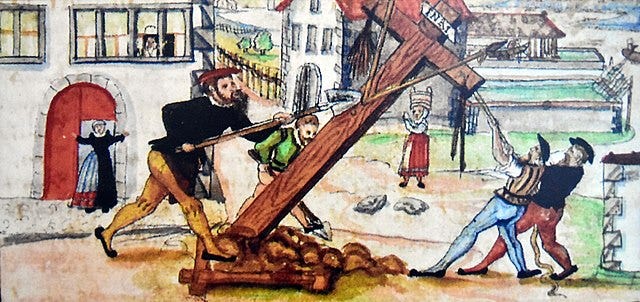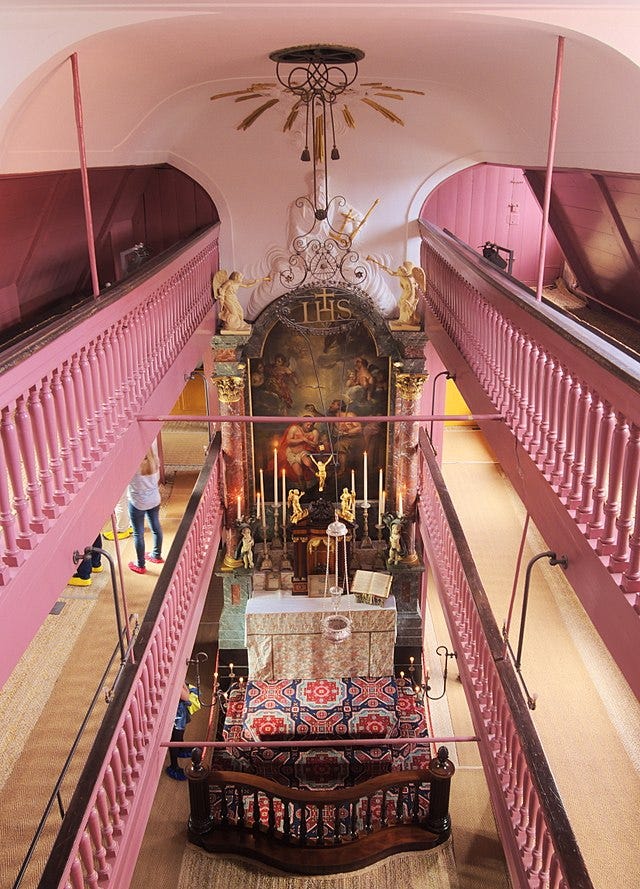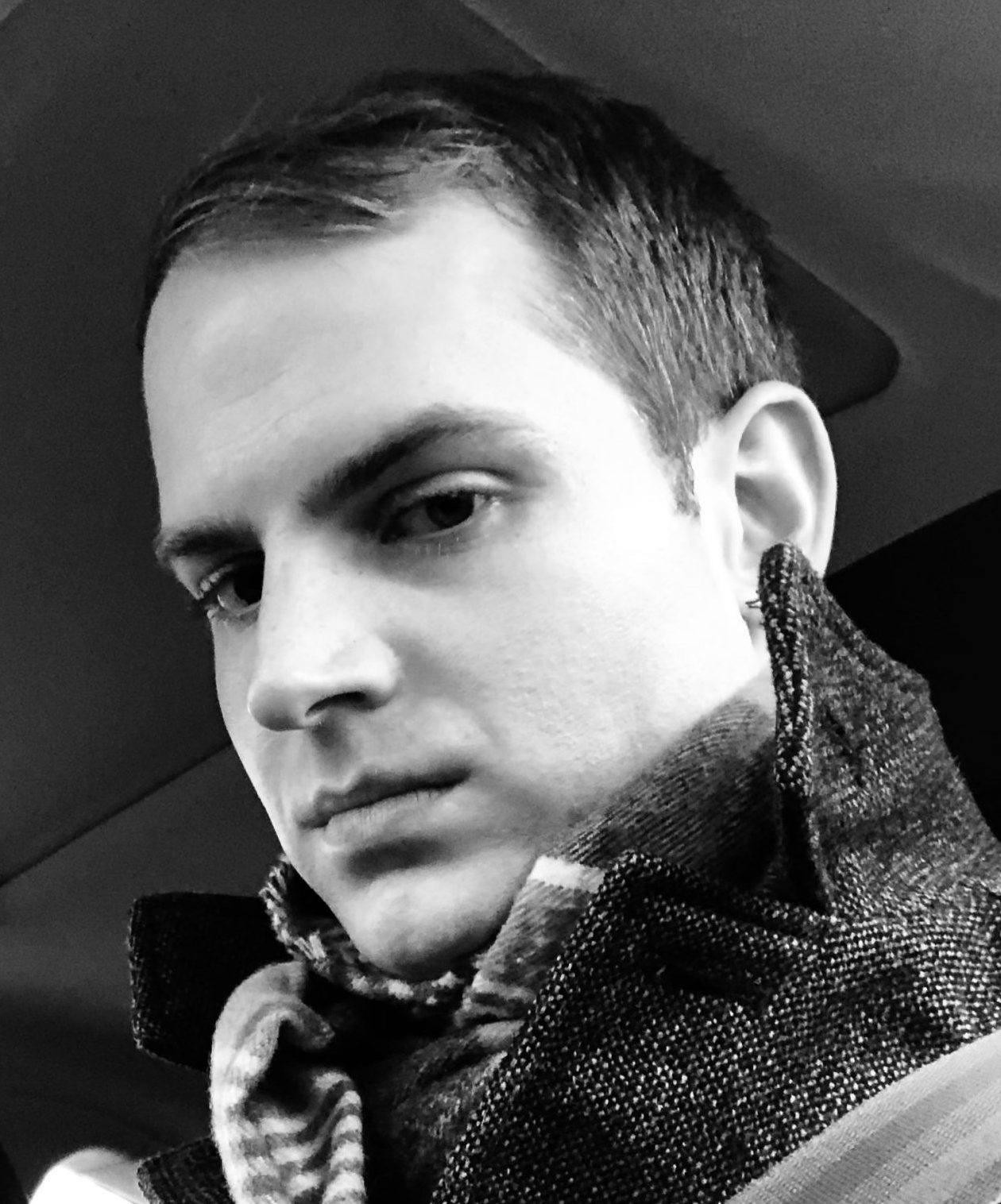 the early hours of 24 August 1572, the ringing of the doorbell woke up jeweler Mathurin Lassault. Upon opening the front door, he was immediately pierced with a sword. Lassault’s son, hearing the commotion, rushed to the scene. He managed to escape after being struck by a sword, fleeing next door for refuge. The neighbor refused to grant him entry, and the younger Lassault was killed in the street.
the early hours of 24 August 1572, the ringing of the doorbell woke up jeweler Mathurin Lassault. Upon opening the front door, he was immediately pierced with a sword. Lassault’s son, hearing the commotion, rushed to the scene. He managed to escape after being struck by a sword, fleeing next door for refuge. The neighbor refused to grant him entry, and the younger Lassault was killed in the street.
Madame Lassault, Mathurin’s wife, tried to escape via the attic to the roof but fell and broke her legs. She too perished in the street, impaled to death. A maid at the residence too tried to seek refuge from a neighbor. He insisted that he would only open his door if she promised to attend a Catholic Mass. She refused and suffered the same fate as the Lassaults.
The above scene was repeated throughout Paris during the next week and throughout France for the next few months. By the end of the year, the Saint Bartholomew’s Day Massacre claimed anywhere from 5,000 to 7,000 Protestant lives in France.
What accounts for such barbarity? For the last decade, France had suffered from bouts of civil war between Catholics and Protestants. In the febrile atmosphere that August, French Protestants confronted what they had feared for so long: that Catholics would annihilate them through mass violence.
The Saint Bartholomew’s Day Massacre constitutes one of the worst instances of violence in history. Revulsion toward this episode is only heightened when one begins to untangle the religious causation. To be sure, most Catholics abstained from bloodshed. But enough Catholics took part; critical was the involvement of Parisian militia members, which led to a breakdown of law and order. The French royal council, ensconced in the Louvre Palace, could do little as its decrees to desist and return home went unheeded.
Religion, Reformation, and Persecution
The massacre of 1572 did not transpire in a bubble: religious divisions had ignited similar, but not as intense, episodes in Europe for nearly half a century. The Reformation began with Martin Luther’s challenge to Catholicism in 1517. Other theologians — Huldrych Zwingli, Heinrich Bullinger, and John Calvin to name a few — joined the chorus, providing doctrinal support for new churches. Secular rulers latched on to these new churches, whether due to genuine religious convictions or power politics.
The religious division of Europe, so long under the aegis of the Roman Catholic Church, could not but spawn violence. In the Middle Ages, Christianity became the cohesive force that bound together members of a community — whether a village, town, or even a kingdom. Religion governed social order and helped people conceive of their place in the cosmos. No matter one’s social standing, all felt a sense of belonging as members of the same faith.
Anything that threatened the supremacy of Christianity met staunch resistance. In the 1200s, a series of crusades extirpated heretics in the south of France. Hundreds of thousands died. Authorities in England stamped out those who followed the heterodox ideas of John Wycliffe throughout the 1400s. Inquisitorial courts sprang up to investigate and correct Christians with unorthodox beliefs; those who persisted in their errors could pay the ultimate price with their lives.
Communities purged themselves of any threat. Hence, Jews migrated into Eastern Europe after having been expelled from England, France, and Spain. Even when Jews had permission to reside in a community, Christian authorities consigned them to live in ghettoes. Officials recognized that Jews provided economic benefits, but they still wanted them cordoned from the rest of society.
Our culture extols the Reformation as a requisite step toward modernity. Society was able to progress from the backwards and authoritative Medieval Church toward a religion that was based on understanding rather than ritual, individualism rather than conformity, this world rather than the afterlife. But Western society did not jump from the Reformation into the Enlightenment. A century and a half of violence followed the disintegration of Medieval Christendom.
Halting the Tides of Religious Change
Secular authorities across Europe initially came down hard on non-conformists during the first decades of the Reformation. Altogether, around 5,000 Christians died at the hands of the state for religious heterodoxy. The Low Countries (today’s Belgium and Netherlands) were quite brutal; judges there condemned 1,100 to death for adhering to a different faith from the 1520s into the 1560s. Such repressive measures ended in failure: Protestantism continued to attract adherents willing to risk their skin to practice what they considered the true faith.
If secular authorities could not stem the tide, common folk took measures into their own hands. First and foremost, they pounced on the sites and objects of the other religion, committing ritual violence. Secular authorities often tried to preempt this popular violence by removing ecclesiastical decorations, but this could backfire. The municipal council of Antwerp moved an image of the Virgin Mary inside a church in 1566 after having heard of iconoclastic outbursts in neighboring communities. This removal only emboldened some bent on purging the town of Catholic “superstition.” Crowds broke into local churches and destroyed artwork, executing statues by chopping off their heads. They further mocked Catholic rituals: youths speaking gibberish pretended to conduct a Latin Mass; people broke open barrels of wine or beer and imbibed these with chalices; some smeared holy oil on their shoes and stamped around the church, trampling on paintings, books, and communion wafers. Although revelry and potential greed for church treasures may have motivated some, we should not underestimate the religious motivations. A crowd in Ghent tore up books taken from churches, littering the streets with paper. These iconoclasts prevented onlookers from collecting any of this debris, as that would be committing the sin of theft.

The violence did not always stop with iconoclasm; some people targeted the adherents of the other faith. A decade before the Saint Bartholomew’s Day Massacre, a scuffle broke out in front of Saint-Médard church in Paris. How this happened is up for debate. Protestants claimed that Catholics interrupted a Reformed service held in a nearby building by continuously ringing church bells; when some Protestants went to the church to tell them to stop, a bloody struggle ensued. Catholics however accused Protestants of initiating the hostilities by attacking their church and breaking statues, images, and decorations. Other massacres pitting neighbor against neighbor occurred throughout the wars.
Pushed by religious zeal, some moved beyond civilians and sought to destroy political leaders. These assassination attempts were the terrorist scares of the era. William of Orange (Protestant leader in the Netherlands), Henri III, and Henri IV (kings of France) met their end from disgruntled Catholics who believed that taking down these rulers would restore order. As with today’s terrorist plots, conspirators entertained farfetched scenarios. A cabal of English Catholics stockpiled barrels of gun powder under the House of Parliament. They intended to ignite the powder when King James I addressed the assembly, killing England’s Protestant government. The conspirators hoped that liberated from the shackles of Protestantism, the English would rise and demand a return to Catholicism. The attacked never transpired: the conspirators were arrested and executed with much fanfare.
Religious non-conformity then was no mere theological issue: the potential for religiously motivated violence justified charges of treason, spawning brutal examples of state oppression against some who never intended to overthrow the government. Edmund Campion, after having left England to train as a priest on the continent, returned to his homeland in 1580 and was captured a year later. As an active Jesuit priest, he was charged for treason against Queen Elizabeth I, who was also the head of the Church of England. While suffering torture, Campion insisted his mission was spiritual and had nothing to do with politics. These pleas were of no avail; he was found guilty and executed.
Europe’s Wars of Religion
Whether state-sponsored violence or melees among civilians, formalized hostilities emerged along religious lines. Warfare in the sixteenth and seventeenth centuries had a religious edge. These were Europe’s religious wars, which can be divided into the following conflicts:
The Peasant’s War (1524–5): German peasants combined their grievances against heavy taxation and other oppressive laws with Martin Luther’s new teachings on the “freedom” of a Christian. Authorities suppressed this peasant’s revolt with little remorse: upwards of 250,000 peasants perished. Luther himself vehemently condemned the peasants, writing that authorities should “smite, strangle, and stab, secretly or publicly, and should remember that there is nothing more poisonous, pernicious, or devilish than a rebel.”
The Kappel Wars (1529–31): Swiss cantons fought about the spread of the Protestantism. The leading reformer of Zürich, Huldrych Zwingli, seeing himself as a soldier of Christ, died in battle in 1531.
The Schmalkaldic Wars (1546–7; 1552–55): The Catholic Holy Roman Emperor Charles V wanted to stamp out the Reformation, and thus Protestant princes rebelled. By the end of 1547, it looked as if the forces of Charles had won, but the Protestants were able to recoup enough strength to end hostilities in 1555 with the Peace of Augsburg. This peace permitted territorial princes to determine the religion (either Catholicism or Lutheranism) of their territory.
The French Wars of Religion (1562–98): Catholics and Protestants fought eight civil wars in all. Protestants wanted greater assurances to practice their faith, but Catholics loathed to concede these privileges; this impasse in part explains the reoccurring warfare. Civil war after civil war created motives for tit-for-tat retaliation, rendering the wars particularly violent. In addition to pitched battles and sieges, towns were blighted with massacres perpetuated by civilians. The wars finally ended after the Protestant heir to the throne, Henri of Navarre, converted to Catholicism and promulgated the Edict of Nantes, which offered limited assurances of worship and political participation to the French Protestant minority.
The Dutch Revolt (1566–1648): This 80-year-long conflict (punctuated with periods of peace) was at once a religious struggle as well as a war for independence. Protestants in the Low Countries, even joined by some Catholics, fought for independence against their Spanish overlords. Eventually, the northern provinces declared their independence, breaking from Spain, and became the Protestant bastion of the Dutch Republic (today, the Netherlands). The southern provinces remained under the control of Catholic Spain and were thus known as the Spanish Netherlands (or Belgium today). Migration helped to diffuse religious animosities: Protestants headed to the northern provinces and Catholics to the south.
The Thirty Years War (1618–48): There were fears in the Holy Roman Empire that a Protestant might become emperor. Furthermore, Calvinism had not been included in the Peace of Augsburg (see the Schmalkaldic Wars above). Although religion was in part an impetus for this war, it soon spawned a continental war where dynastic concerns and continental power politics took prominence. The Peace of Westphalia concluded this conflict, with Catholicism, Lutheranism, and now Calvinism permitted in the empire.
The English Civil War (1642–8): King Charles I wanted to reform some rituals of the Church of England. This fueled a growing divide between monarch and Parliament, the members of which wanted to preserve the integrity of the English Church. Religion thus joined a constitutional question about who had proper authority — the king or Parliament — and precipitated a civil war. The war ended with the arrest, trial, and execution of King Charles.
The Potential for Peace: Religious Tolerance
Religion animated the politics, warfare, and of course the violence of the era. But we must not assume that conflict always reigned supreme in all places.
Some communities developed and implemented policies of religious tolerance to accommodate diverse worship and avoid bloodshed. These policies were pragmatic and often ad hoc measures: contemporaries still held onto the ideal of religious unity but conceded that religious pluralism may need to be accepted until theological differences could be settled. Tolerance was not a virtue for social good; it was a necessary evil.
Catholics and Protestants under the authority of ruler of a different religion often had the option to go to a neighboring territory (if controlled by a ruler of their religion) to worship. In a few towns, members of different religions were able to worship with little restraint. They even shared churches in a select few communities. Amidst the Kappel Wars, Catholics and Protestants in the canton of Thurgau worshipped at different times in the same churches.
Although violence rarely marred these communities, we must avoid any romantic notions about these arrangements. Catholics and Lutherans lived with little violence in the German city of Augsburg, but even then, relations could be far from cordial. When Pope Gregory XIII introduced the Gregorian Calendar to replace the error-riddled Julian Calendar, Augsburg’s Catholics adopted the new calendar, but the Lutherans refused. Citizens thus had to balance two calendars when conducting any business.
Not raising a fuss and opting for private worship remained a common option everywhere. The Dutch Republic outlawed Catholicism and declared the national Reformed Church the only legal religion. But due to its struggle for independence, it never mandated that all citizens of the republic become formal members of the national church. Room thus opened for religious non-conformists (Catholics, Jews, non-Reformed Protestants) to live unencumbered in the republic. Not expected to go to Reformed services, they could worship secretly. Jan Hartman, a wealthy merchant in the Amsterdam, transformed his attic into a private Catholic Church, which is open today as a museum.

Finally, not everyone sought to stoke tensions with their neighbors on account of religion. Even during the massacre in Paris, some Protestants were able to rely on the goodwill of Catholic acquaintances. Maximilien de Béthune, who became prime minister of France after the wars, survived the massacre as a schoolboy because his Catholic teacher agreed to hide him. Charlotte d’Arbaleste, who would become the wife of the Protestant intellectual Philippe de Mornay, saved her daughter by entrusting her to live with a Catholic relation. Charlotte then spent the next week going from house to house of Catholic friends until she was able to escape Paris.
Although the age witnessed some of the worst atrocities imaginable on account of religion, communities were already refining the practices and justifications of tolerance, no matter how inchoate or short-lived. People did not have to wait until the Enlightenment to see the utility of managing social pluralism. In fact, our own acceptance of religious tolerance today has deeper roots that go further back before the Enlightenment, with much of it forged during this violent, yet critical, era.
Further Reading
Diefendorf, Barbara. Beneath the Cross: Catholics and Huguenots in Sixteenth-Century Paris. Oxford and New York: Oxford University Press, 1991.
— — — — . The Saint Bartholomew’s Day Massacre: A Brief History with Documents. Boston & New York: Bedford/Saint Martin’s Press, 2009.
Duke, Alastair. The Reformation and Revolt in the Low Countries. London and New York: Hambledon and London, 2003.
Greengrass, Mark. Christendom Destroyed: Europe 1517–1648. London: Penguin Books, 2015.
Holt, Mack P. The French Wars of Religion, 1562–1629. New York: Cambridge University Press, 2005.
Kaplan, Benjamin. Divided by Faith: Religious Conflict and the Practice of Religious Toleration in Early Modern Europe. Cambridge, MA: Belknap Press, 2007.
Marshall, Peter. Heretics and Believers: A History of the English Reformation. New Haven: Yale University Press, 2018.
Walsham, Alexandra. Charitable Hatred: Tolerance and Intolerance in England, 1500–1700. Manchester, UK: Manchester University Press, 2006.

A historian interested in religious history. My specialities include early modern Europe, history of religious tolerance, religious violence, and French history.





